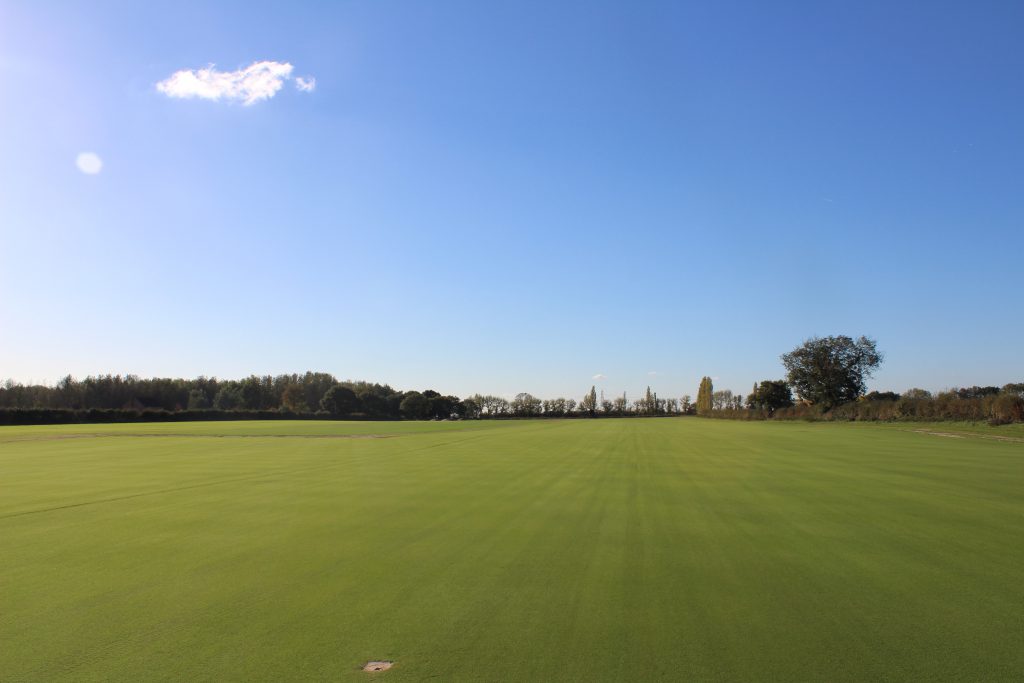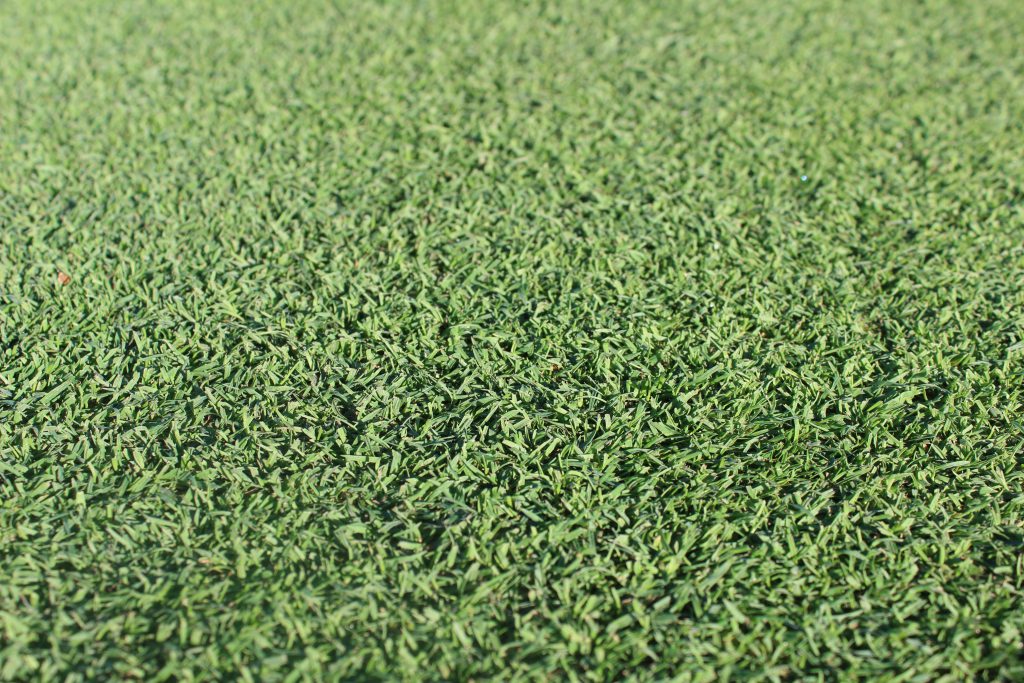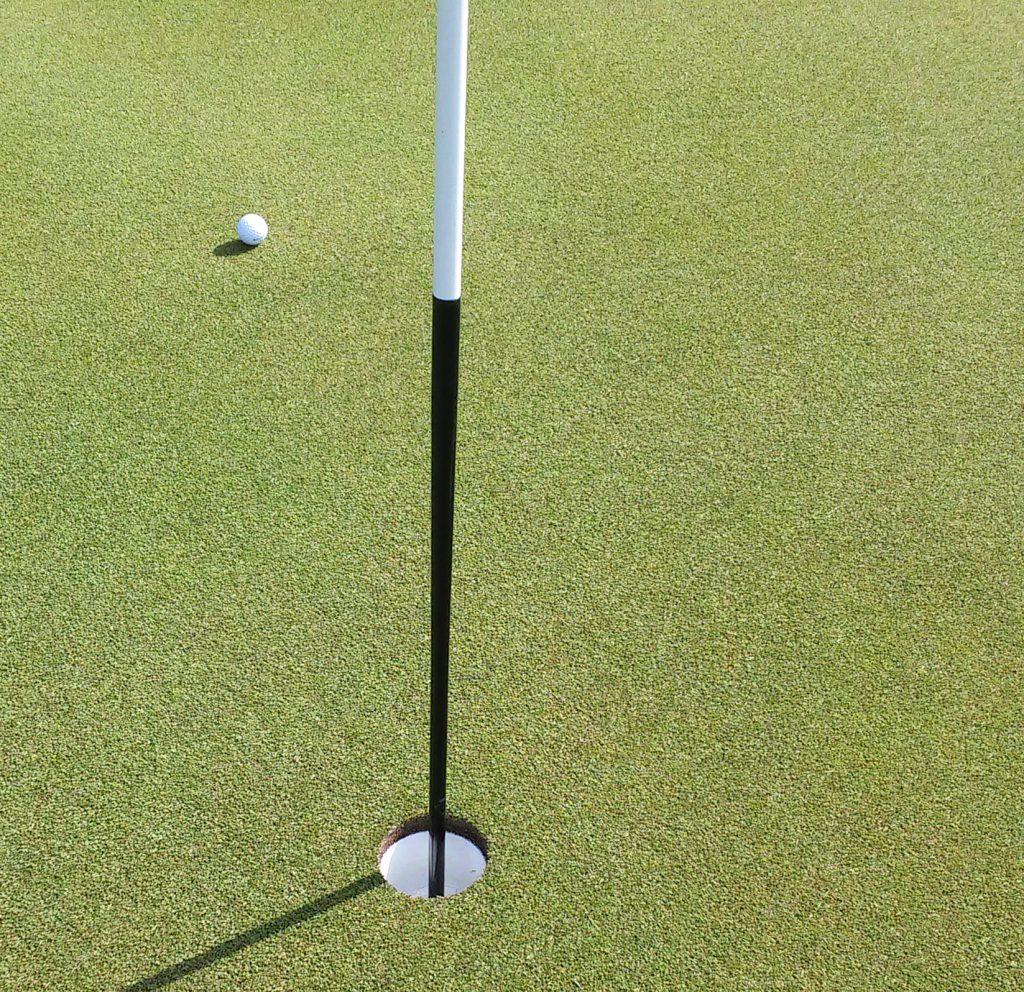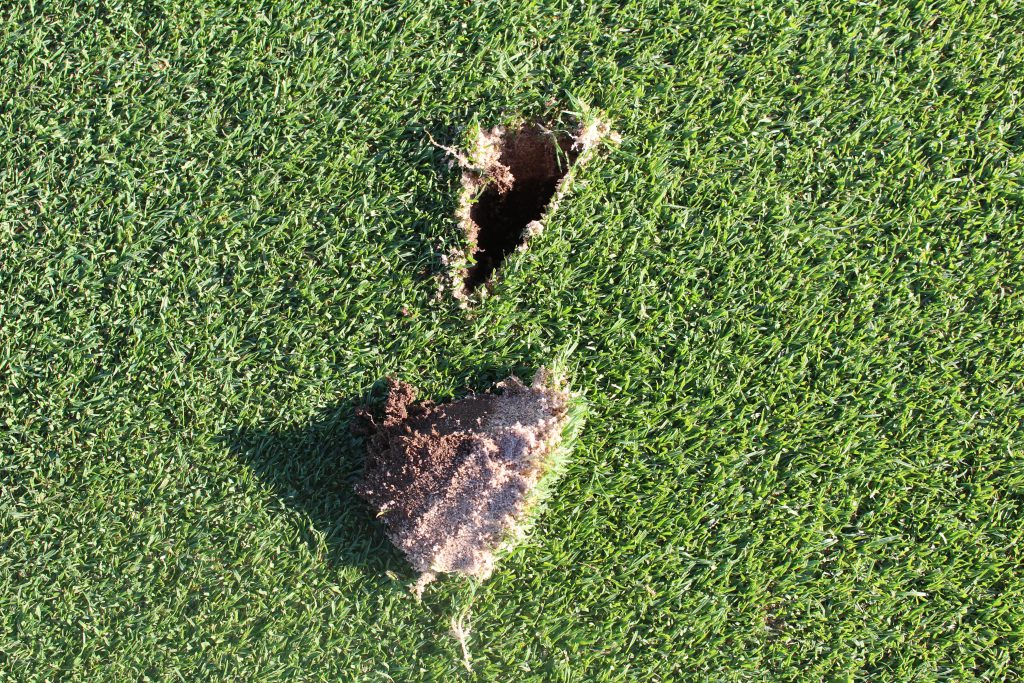The new generation of 007 DSB creeping bents
Related Articles
Low input requirements, fast rolling speeds and enhanced disease resistance – the new generation of 007 DSB creeping bents has them all.
As tightening input budgets and the trend towards earlier cutting at low heights puts increasing pressure on browntop bents and fescue swards, greenkeepers should consider how the latest generation of ‘super bents’ can improve the quality of their putting greens.

The 2.5 hectare plot of pure 007 DSB at Tillers Turf in Nottinghamshire. It has been established on USGA specification sand and is cut daily at 4mm. It offers excellent disease resistance, fast ball roll and good wear and tear tolerance in a range of climatic conditions
That is according to Paul Moreton, amenity technical sales representative for Germinal, who believes that, for many courses, 007 DSB Creeping Bent could be the cultivar of the future.
“The species’ inherent traits of traditional browntop bents and fescues can only be improved to a certain extent,” Paul explains. “Therefore, where clubs are increasing their wear, play and traffic – whilst at the same time reducing inputs and mowing at lower cutting heights for longer – there is a need for newer, better performing cultivars to be introduced,” Paul explains.
Despite having input requirements on a par with existing browntop bents, the latest high-performance ‘super bent’ varieties exhibit exceptional resistance to disease and are able to vigorously outcompete undesirable species. They also offer improved levels of heat and cold tolerance as well as good fineness of leaf and a dense growth habit, thereby making them suited to greens where, whatever the budget, there is a need to improve the composition of grass species.

Of the new generation of ‘super bent’ cultivars, 007 DSB Creeping Bent is arguably the best of the best and is certainly the first universally adaptable creeping bent variety.
“007 DSB was developed in the US where it was bred from 24 parent plants to produce a single cultivar with a wide genetic base,” Paul explains. “It is this broad range of traits which enables 007 DSB to deliver all the qualities of a top-rated creeping bentgrass (prostrate growth habit, high shoot density and good wear tolerance) in a range of climatic conditions. It also offers good resistance to anthracnose, fusarium and snow mould, and is exceptionally resistance to dollar spot.

However, unlike other creeping bents which typically require supplementary maintenance, 007 DSB is able to deliver these benefits with a reduced requirement for water and nutrients, thereby enabling it to be easily maintained alongside the existing browntop.
According to the breeder of 007 DSB, Dr Richard Hurley of Rutgers University in New Jersey, modern creeping varieties can also help greenkeepers to achieve the fast green speeds desired by their club’s players: “Fescues will not persist in the long-term at a mowing height of 5mm or lower, while browntop bentgrasses will, over time, thin out when cut at 4mm,” he explains. “The traditional mixture of browntop bentgrasses and fescues is therefore unable to produce a long-lasting putting surface of any quality.
“In contrast, the latest generation of creeping bentgrasses have a much more prostrate growth habit which enables them to easily persist at a cut height of 3mm or slightly lower, while still maintaining turf density, thereby giving them the advantage in this modern age of fast green speeds.”
The combination of these factors: low nutrient requirement, disease resistance, tolerance to low cutting, and adaptation to a range of climates means that sales of 007 DSB soared in 2018 with all UK stocks selling out.
In fact, so great has the level of interest been, that leading turf grower, Tillers Turf of Nottinghamshire, has recently established a 2.5 hectare plot of pure 007 DSB, with the aim of supplying a premium quality turf for use on greens at golf courses throughout the UK and Europe.

“We sowed the 007 in June 2018 and observed consistent germination within six days,” explains Anthony Darker, Tillers Turf’s specialist turf manager. “We made our first cut on day 10 using cylinder mowers set at 8mm and continued to mow on a daily basis for the following weeks. During that period, we added a total of 300 tonnes of a quality USGA specification sand which was applied evenly over the crop at three-day intervals. Once we reached the required sand depth, we slowly reduced the mowing height to 4mm. This, coupled with a balanced nutrition programme, steady irrigation and regular brushing, produced arguably the best turf sward that I and all at Tillers have ever seen.”

























